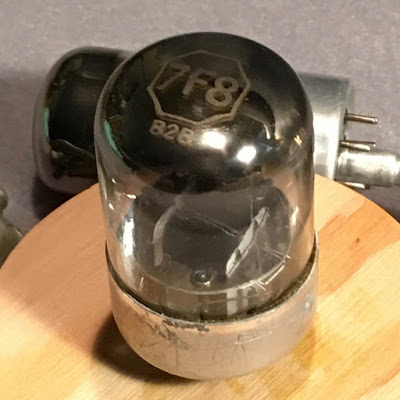My boring digital life
 |
Tascam DA-P1
courtesy of pgr.tv |
Probably the most significant digital audio gear I ever owned was the Tascam DA-P1 DAT recorder. This machine recorded my recitals, chamber music performances and served as a back-up and playback deck for my CD projects from the mid 90s until the early 2000s. It was rendered obsolete when HD based recording became the industry standard.
 |
DAC in the Box
courtesy of Wiki Commons |
I never invested in a high-end CD player. The most I ever did for CD playback was get an Audio Alchemy DAC in the Box fed by the digital output of a consumer grade Philips CD player. When the Philips CD player conked out in the early 2000s, it was replaced by a Sony DVD/SACD player.
Line transformers as Digital Sound Processors
 |
| Tamura line transformers |
Ever since I inserted a pair of Tamura 600:600 line transformers as a
digital sound processor (DSP) between the CD player/DAC and my preamp line inputs, I didn't see the necessity of upgrading the Audio Alchemy DitB. I don't know if this holds water but my empirical rational for this is, magnetic coupling filters digital artifacts and RFI noise from the DAC output, which is manifested as harshness to my ears.
Art Dudley Listening
If I don't consider the few issues of Stereo Sound Tube Kingdom and MJ I picked up in
Tokyo in 2015, it's been a long while since I subscribed to, let alone bought, a single issue of
Stereophile,
The Absolute Sound or any audio magazine. After the demise of
Sound Practices in the late 90s, the only audio magazine I read was Art Dudley's Listener.
Although I've never had a chance to meet Art personally, I know he is a fine gentleman. I've been following his
Stereophile column online and he has given credit to my musings on the
open baffle as well as the
Altec 755A. He even sent me a private message when my
father passed away earlier this year. I was looking forward to meeting him at the
Capital Audio Fest 2017 but missed the event because it coincided with the Harrisburg Symphony's November Masterworks.
 |
| iPad mini + UTC A20 line transformers |
Due to my current location, access to quality FM programming is practically nil. I've relied mainly on digital streaming via iPad mini + DSP to widen my choice of free music. 😜
USB DAC
 |
| Audioquest Dragonfly Black V1.5 |
When I realized that the iPad mini's internal DAC can be by-passed through an Audioquest Dragonfly USB DAC, I searched the archives of Art Dudley's
Listening to see if he had anything to say about the AQ Dragonfly USB DACs. After getting
Art's stamp of approval, I placed an order for the cheaper Black.
 |
| Stereo > Mono |
Whether I was listening in mono or stereo, this was the best $100 (ok, + $38 for the Lightning to USB 3 Camera cable adapter) investment I ever made in digital audio. The degree of improvement was at least as significant, if not greater than, when I started playing with
transformer DSP(s) between the digital source and my line preamp input(s).
 |
Stereo set up =
AQ Dragonfly Black > a pair of UTC A20 wired 1:1
> preamp line stage |
The combination of the iPad mini + AQ Dragonfly Black +
DSP = smooth analog
-like detail across the audio bandwidth. So I take back my word, I
need this
USB DAC. 😎
Thank you Art and here's to us meeting some time soon. Cheers! 🍻














